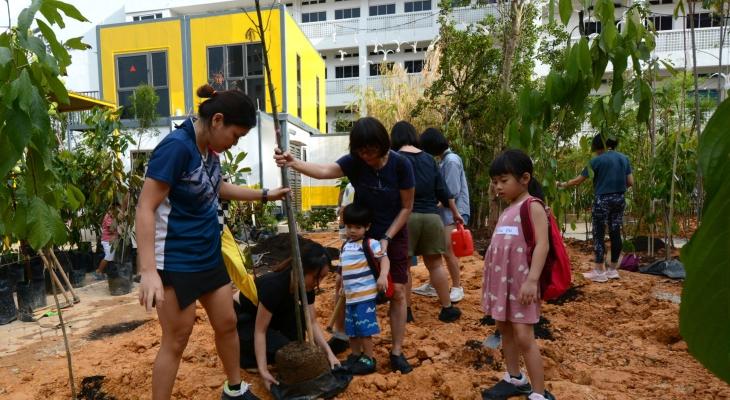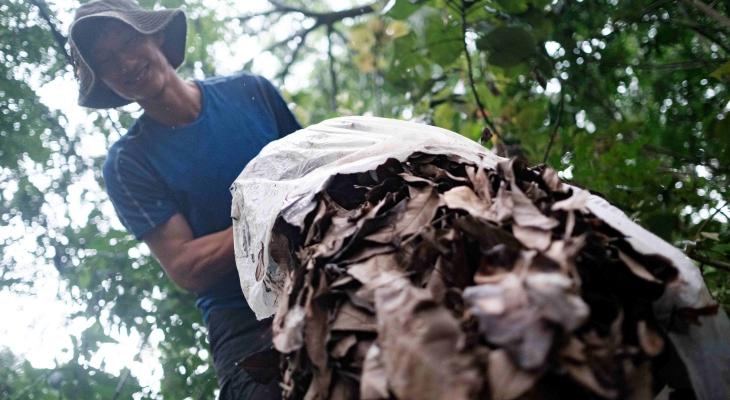 No time to read? Here’s a 30sec bite
No time to read? Here’s a 30sec bite
In the lush forests of Bukidnon, Philippines, a sacred collaboration begins. Seven tribes of the province and non-profit organisation Hineleban Foundation link hands, with a singular purpose - the return of the forests. The Bukidnon’s jungles have suffered significantly. Before illegal logging started, woodlands covered 70 per cent of the Philippines. Now, that number has plummeted to less than 2 per cent. Enter the sacred customary compact, an official pact made between the tribes and the foundation, all vowing to bring life back into Bukidnon, while respecting the tribes’ traditions and rituals.
The word “classroom” conjures up visuals of four walls, neat rows of desks facing the front of the room, and words scrawled on the whiteboard. But for the indigenous people of Bukidnon, Philippines, their reality is far more imaginative.
Imagine a grand painting - mountain peaks and plateaus, vast rolling hills, lush forests, cascading waterfalls and rivers. That is where the seven tribes of Bukidnon learn at and call home. It is also referred to as the “Food Basket of Mindanao”, as it is the leading producer and supplier of fresh fruits and vegetables in the region.
“We regard the forest as a learning space,” shares Datu Vic, chief of the Talaandig tribe. He is in a privileged position - acting as both connector and link between the tribe and its cultural practices. His role includes collecting information about his people and their cultures. He knows it’s an onerous task since the forest is the centrepiece of the tribal people’s lives. When asked about how important the forest is to them, he says, “If the forest is gone, we lose a learning space.
“It is the source of our knowledge and livelihoods.” The forest has served the tribes of Bukidnon in wondrous ways - they have been living off the land; collecting medicine, and foraging and hunting for food all their lives.
The indigenous people have a spiritual relationship with the land – to them she is sacred - a source of life. Datu Vic shares that the people are the “caretakers and custodians of God’s creation [the forest]” and that they have to “ask permission before doing anything different with the forest’s natural state”.
Every year, the tribes will make a trek to the top of the mountain to conduct rituals as a mark of respect. In exchange for these offerings, the people believe they are provided with the abundance of the forest.
But over the years, Bukidnon’s natural forests have suffered tremendously. According to the Environmental Science for Social Change (ESSC), 70 per cent of the Philippines was covered with forests. But due to the massive logging that continued until 1970, it dropped to just 34 per cent. Today, the country has less than 2 per cent of its primary forests remaining. Something had to be done, and that’s where Hineleban Foundation stepped in.
Born in Bukidnon in 1949, John Perrine, founder of Hineleban Foundation, left to work and study in Manila, and returned in 1975, inspired and challenged to do something about his home.
The beginning was rocky - John and his team would distribute seedlings across Bukidnon, but only to return and find that they didn’t survive as there was no one taking care of the seedlings. He realised that partnership with the indigenous people wasn’t just a formality, it was a necessity.
This was lesson number one for John. “You can plant, but you can’t establish a sustainable forest that survives without the community itself.” John realised that ownership is extremely important, and that the foundation had to “restore the people to becoming the custodians of the forest because that was actually culturally what they were”.
Thus, the sacred customary compact was borne.
It was a promise, not just between the foundation and the seven tribes, but also, with nature – the land and its people will be respected in the work that they do. And the people have been seeing the fruits of their labour. Over a decade, close to three million trees have been planted, and at the same time, farmers have been trained and livelihoods have been supported.
John hopes that this collaboration will continue beyond him and to the next generations. Over the next five years, the foundation hopes to plant between 5 to 10 million trees.
“What we've seen is that people who come here get inspired and ask, “How can we do this?” It was apparent to John – the future lay in the hands of the young people.
“Young people have the idealism in life and are not yet beaten down,” John adds, “when they see a better world, you know that they want to go do it. They just need a little bit of help on how to do it. So, what we hope is to inspire them and teach them how to do it.”
About Hineleban Foundation
Hineleban Foundation is a non-profit organisation that aims to reforest areas in Bukidnon, Philippines and to create sustainable livelihoods for the indigenous people in Mindanao.
Contributors
Director
Producer & Writer
Camera & Editor
Sound & Photographer
Executive Producer







